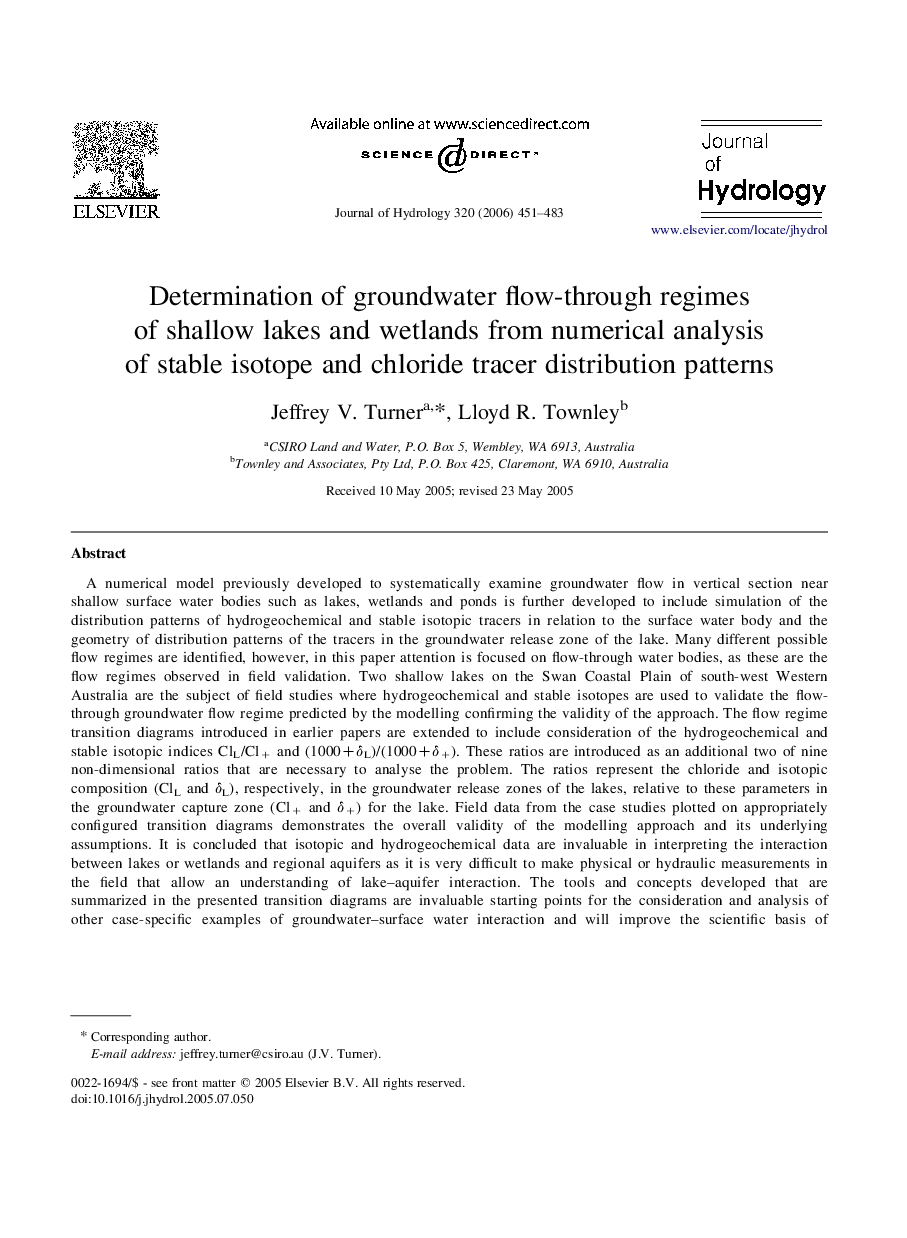| کد مقاله | کد نشریه | سال انتشار | مقاله انگلیسی | نسخه تمام متن |
|---|---|---|---|---|
| 4580874 | 1630168 | 2006 | 33 صفحه PDF | دانلود رایگان |

A numerical model previously developed to systematically examine groundwater flow in vertical section near shallow surface water bodies such as lakes, wetlands and ponds is further developed to include simulation of the distribution patterns of hydrogeochemical and stable isotopic tracers in relation to the surface water body and the geometry of distribution patterns of the tracers in the groundwater release zone of the lake. Many different possible flow regimes are identified, however, in this paper attention is focused on flow-through water bodies, as these are the flow regimes observed in field validation. Two shallow lakes on the Swan Coastal Plain of south-west Western Australia are the subject of field studies where hydrogeochemical and stable isotopes are used to validate the flow-through groundwater flow regime predicted by the modelling confirming the validity of the approach. The flow regime transition diagrams introduced in earlier papers are extended to include consideration of the hydrogeochemical and stable isotopic indices ClL/Cl+ and (1000+δL)/(1000+δ+). These ratios are introduced as an additional two of nine non-dimensional ratios that are necessary to analyse the problem. The ratios represent the chloride and isotopic composition (ClL and δL), respectively, in the groundwater release zones of the lakes, relative to these parameters in the groundwater capture zone (Cl+ and δ+) for the lake. Field data from the case studies plotted on appropriately configured transition diagrams demonstrates the overall validity of the modelling approach and its underlying assumptions. It is concluded that isotopic and hydrogeochemical data are invaluable in interpreting the interaction between lakes or wetlands and regional aquifers as it is very difficult to make physical or hydraulic measurements in the field that allow an understanding of lake–aquifer interaction. The tools and concepts developed that are summarized in the presented transition diagrams are invaluable starting points for the consideration and analysis of other case-specific examples of groundwater–surface water interaction and will improve the scientific basis of decision-making concerning lake and wetland management and groundwater interaction by water resource and environmental managers.
Journal: Journal of Hydrology - Volume 320, Issues 3–4, 15 April 2006, Pages 451–483